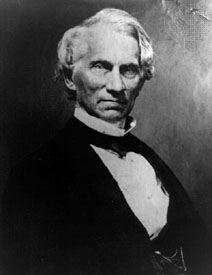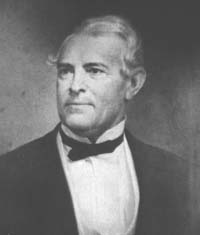Related Research Articles

The Confederate States of America (CSA), commonly referred to as the Confederate States (C.S.), the Confederacy, or the South, was an unrecognized breakaway republic in the Southern United States that existed from February 8, 1861, to May 9, 1865. The Confederacy comprised eleven U.S. states that declared secession and warred against the United States during the American Civil War. The states were South Carolina, Mississippi, Florida, Alabama, Georgia, Louisiana, Texas, Virginia, Arkansas, Tennessee, and North Carolina.

The Department of the Treasury (USDT) is the national treasury and finance department of the federal government of the United States, where it serves as an executive department. The department oversees the Bureau of Engraving and Printing and the U.S. Mint. These two agencies are responsible for printing all paper currency and minting coins, while the treasury executes currency circulation in the domestic fiscal system. The USDT collects all federal taxes through the Internal Revenue Service; manages U.S. government debt instruments; licenses and supervises banks and thrift institutions; and advises the legislative and executive branches on matters of fiscal policy. The department is administered by the secretary of the treasury, who is a member of the Cabinet. The treasurer of the United States has limited statutory duties, but advises the Secretary on various matters such as coinage and currency production. Signatures of both officials appear on all Federal Reserve notes.

The Constitution of the Confederate States was the supreme law of the Confederate States of America. It superseded the Provisional Constitution of the Confederate States, the Confederate State's first constitution, in 1862. It remained in effect until the end of the American Civil War in 1865.

The president of the Confederate States was the head of state and head of government of the Confederate States. The president was the chief executive of the federal government and commander-in-chief of the Confederate Army and Navy.

Howell Cobb was an American and later Confederate political figure. A southern Democrat, Cobb was a five-term member of the United States House of Representatives and the speaker of the House from 1849 to 1851. He also served as the 40th governor of Georgia (1851–1853) and as a secretary of the treasury under President James Buchanan (1857–1860).

John Henninger Reagan was an American politician from Texas. A Democrat, Reagan resigned from the U.S. House of Representatives when Texas declared secession from the United States and joined the Confederate States of America. He served in the cabinet of Jefferson Davis as Postmaster General.

The Confederate States Congress was both the provisional and permanent legislative assembly of the Confederate States of America that existed from 1861 to 1865. Its actions were for the most part concerned with measures to establish a new national government for the Southern proto-state, and to prosecute a war that had to be sustained throughout the existence of the Confederacy. At first, it met as a provisional congress both in Montgomery, Alabama, and Richmond, Virginia. As was the case for the provisional Congress after it moved to Richmond, the permanent Congress met in the existing Virginia State Capitol, a building which it shared with the secessionist Virginia General Assembly.

Christopher Gustavus Memminger was a German-born American politician and a secessionist who participated in the formation of the Confederate States government. He was the principal author of the Provisional Constitution (1861), as well as the founder of the Confederate financial system. As the first Confederate States Secretary of the Treasury, Memminger was the principal author of the economic policies of Jefferson Davis's administration.

George Alfred Trenholm was a South Carolina businessman, financier, politician, and slaveholding planter who owned several plantations and strongly supported the Confederate States of America. He was appointed as its Secretary of the Treasury during the final year of the American Civil War.

The Confederate States secretary of war was a member of President Jefferson Davis's cabinet during the American Civil War. The Secretary of War was head of the Confederate States Department of War. The position ended in May 1865 when the Confederacy collapsed during John C. Breckinridge's tenure of the office.

The Confederate government of Kentucky was a shadow government established for the Commonwealth of Kentucky by a self-constituted group of Confederate sympathizers and delegates sent by Kentucky counties, during the American Civil War. The shadow government never replaced the elected government in Frankfort, in which the state legislature had strong Union sympathies while the governor was pro-Confederate. Neither was it able to gain the whole support of Kentucky's citizens; its jurisdiction extended only as far as Confederate battle lines in the Commonwealth, which at its greatest extent in 1861 and early 1862 encompassed over half the state. Nevertheless, the provisional government was recognized by the Confederate States of America, and Kentucky was admitted to the Confederacy on December 10, 1861. Kentucky, the final state admitted to the Confederacy, was represented by the 13th (central) star on the Confederate battle flag.
Edward Carrington Elmore was an American politician. He served as the Treasurer of the Confederate States of America during the American Civil War. His signature appears on collectible Confederate currency, and he designed several of the Confederacy's coins.
The Confederate Civil Service was the civil service of the Confederate States of America.

The Confederate States of America financed its war effort during the American Civil War of 1861–1865 through various means, fiscal and monetary. As the war lasted for nearly the entire existence of the Confederacy, military considerations dominated national finance.

The Confederate States War Department was a cabinet-level department in the government of the Confederate States of America responsible for the administration of the affairs of the Confederate States Army. The War Department was led by the Confederate States secretary of war. During its existence, the War Department was the largest department of the Civil Service in the Confederacy.

The Department of the Navy was the Confederate Civil Service department responsible for the administration of the affairs of the Confederate States Navy and Marine Corps. It was officially established on February 21, 1861.
During the American Civil War 11 Southern slave states declared their secession from the United States and formed the Confederate States of America, also known as "the Confederacy". Led by Jefferson Davis, the Confederacy fought for its independence from the United States. Below is a list of those who served in the Confederate States Department of the Treasury.

During the American Civil War, blockade runners were used to get supplies through the Union blockade of the Confederate States of America that extended some 3,500 miles (5,600 km) along the Atlantic and Gulf of Mexico coastlines and the lower Mississippi River. The Confederacy had little industrial capability and could not indigenously produce the quantity of arms and other supplies needed to fight against the Union. To meet this need, numerous blockade runners were constructed in the British Isles and were used to import the guns, ordnance and other supplies that the Confederacy desperately needed, in exchange for cotton that the British textile industry needed greatly. To penetrate the blockade, these relatively lightweight shallow draft ships, mostly built in British shipyards and specially designed for speed, but not suited for transporting large quantities of cotton, had to cruise undetected, usually at night, through the Union blockade. The typical blockade runners were privately owned vessels often operating with a letter of marque issued by the Confederate government. If spotted, the blockade runners would attempt to outmaneuver or simply outrun any Union Navy warships on blockade patrol, often successfully.

The 1861 Confederate States presidential election of November 6, 1861, was the first and only presidential election held under the Permanent Constitution of the Confederate States of America. Jefferson Davis, who had been elected president and Alexander H. Stephens, who had been elected vice president, under the Provisional Constitution, were elected to six-year terms that would have lasted from February 22, 1862, until February 22, 1868. Both Davis and Stephens' offices were abolished on May 5, 1865, when the Confederate government dissolved, however, and so were unable to finish their terms.
References
- ↑ Constitution of the Confederate States of America. (1861).
- ↑ "The Confederate Civil Service".(1959).Van Riper, Paul and Schieber, Harry. Journal of Southern History. Southern Historical Association: Houston. ISSN 0022-4642
- ↑ The Library of Congress Civil War Desk Reference. Wagner, Margaret E. , Gallager, Gary W., and Finkleman, Paul (Eds.).
- 1 2 3 4 5 Van Riper and Schieber, p. 454
- 1 2 3 "Organization the Government of the Confederate States". Montgomery Daily Mail. 1864-05-22. p. 1. Retrieved 2023-09-07.
- ↑ "Painting - George Trenholm | American Civil War Museum". acwm.pastperfectonline.com. Retrieved 2023-09-07.
- ↑ Acts and Resolutions of the First Session of the Provisional Congress of the Confederate States. Enquirer's Book and Job Press. 1861. pp. 71–72. Retrieved 24 May 2010.